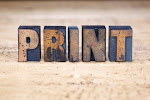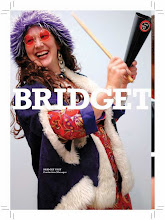I have been absolutely SWAMPED! It would be ridiculous to complain in these economic times but I must apologize because my blog has definitely taken a hit! Thanks for hanging in there with me!!
I truly feel honored to collaborate with our clients and design team on such amazing projects. Most recently, we turned out:
- An AMAZING flip book for the updated line of Sony Cyber-shot cameras
- Various trade show items and a folder with a strand of spot gloss varnish DNA for Pathway Genomics
- Updates to two 2010 versions of Medill @ Northwestern Graduate and Integrated Marketing Communication View Books (and spent a day and a half at the printer press checking them).
- Finessed new specs and a new relationship with a vendor in Chicago to produce Medill’s alumni magazine.
- And, we worked on a super-secret project for a high-profile client, which I cannot divulge just yet!
It is always so rewarding when these projects come to fruition and our samples arrive. I am so amazed by printing technology and everything our vendors can accomplish in such a short period of time. Here’s a shout out to our vendors—Rush Press, EarthColor, Skyline San Diego, and Schneider Graphics, for doing such a tremendous job on all of these projects!
Take a gander:
One of the printing methods we often use is called strikethrough. You can see on both the Sony flip book and the Pathway folder, how the method is used to create a result. You can use either gloss UV’s or gloss varnishes to create these effects. The gloss varnish is more economical and is typically the quicker route but the gloss UV really makes the images or typography pop off the page, especially when you are using dull UV varnishes in conjunction.
Essentially, your printer will lay down the ink and then, a full layer of gloss. The key to making the gloss “pop” is the juxtaposition of the shiny gloss and the dull varnish working side by side. Your vendor will create a separate plate for the dull varnish, which, based on the way the file is designed, omits certain areas. Our designers create clipping paths (or masks) of the items they want to highlight and save them on a separate layer (or separate file) indicating the gloss UV/varnish area. The areas highlighted in white (or, often times, in magenta) are the areas that will pop when printed. For the Sony flip book, in addition to hitting the product shots, we highlighted this technique by setting up a “blind” varnish (i.e. a varnish effect with no actual printed imagery or typography below it). This method is most effective on dark backgrounds, however, as seen in the Pathway folder example, it can also be used subtly, to create interest.
Here’s an example of how the file is set up:
The first image is the final, print-ready file. The second image is the varnish file.
And... here's the final outcome:
Pretty groovy, eh?
Check with your print vendor regarding their methodology. Each facility has a unique procedure for attaining this result. For example, the same outcome can be achieved by printing a full layer of dull varnish first, then imprinting a spot gloss varnish on top (as in the Pathway folder example). In this case, if you are working with photographic images or large areas of solid color, please keep in mind that the dull varnish tends to tone down their overall impact, so make sure you understand your printer’s process, when choosing to incorporate this effect.
Utilizing specialized printing techniques can really give your projects and your Client’s products/brand the POP! they need to make them stand out. This technique is one of many. MORRIS—making cameras and DNA sexy. ;~)













